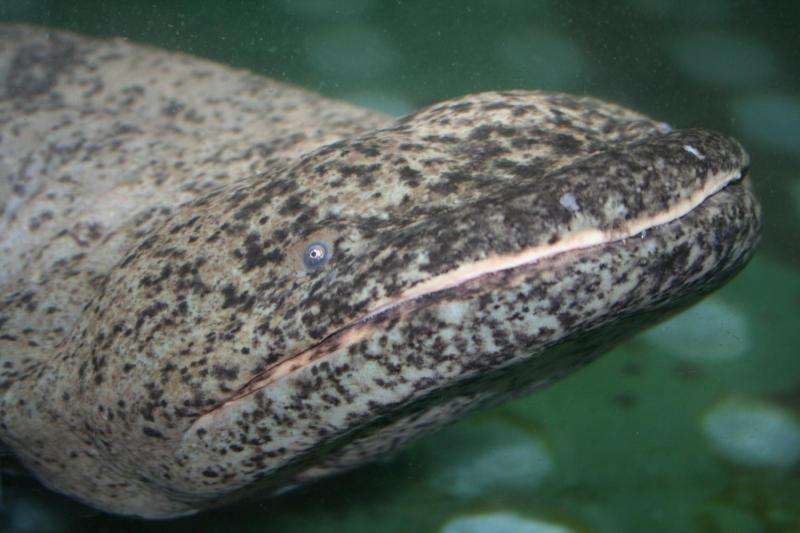3-D model of giant salamanders' bite: Chinese giant salamander strikes prey in front, approaching from the side

A 3D model of the world's largest living amphibian's bite, the Chinese giant salamander, reveals that it feeds on prey located in front of it, but can also perform quick strikes to the side on approaching animals, according to a study published April 8, 2015 in the open-access journal PLOS ONE by Josep Fortuny from Institut Català de Paleontologia, Spain and colleagues.
The endangered Chinese giant salamander feeds on crustaceans and worms, but also on fish, amphibians, and other small mammals using a sit-and-wait strategy and biting when they approach. The authors of this study created a 3D model to help explain the feeding mechanisms of this poorly understood animal. They modelled the biomechanics of the bite of the giant salamander from 3D CT-scan images of their skulls and applying a numerical technique called finite element analysis to aid the non-invasive investigation of the distribution of forces within the skull.
The analysis reveals that this salamander feeds mostly on prey located directly in front of it, but can also perform quick strikes to the side, biting with one side of the mouth. Once they prey is trapped, the salamander pulls it to the back of the jaw where a stronger bite is performed to prevent it from escaping. The authors suggest that this ability is possibly related to the salamander's skull architecture, as this species lacks a bony bridge between the posterior end of the maxilla and the anterior quadrato-squamosal region, which is typical of most salamanders. Understanding how this species hunts not only broadens the knowledge of its biology, but may also help in reconstructing how early tetrapods and extinct amphibians fed.
Lead author Josep Fortuny said, "The position where the prey comes into contact with the skull and jaw of the salamander shows us that there are some areas that are better than others when biting, being optimal when they bite with the anterior part on the snout. Possibly, when the prey is situated in a less optimal position the animal has to bite twice: one to catch the prey and again to put in a frontal position."
More information: PLOS ONE, dx.plos.org/10.1371/journal.pone.0121885
Journal information: PLoS ONE
Provided by Public Library of Science



















